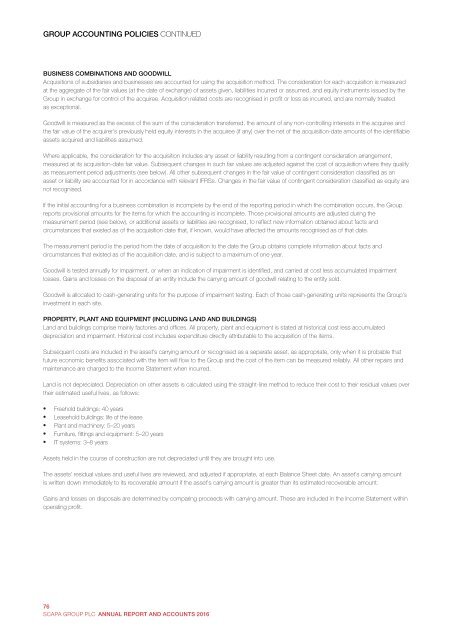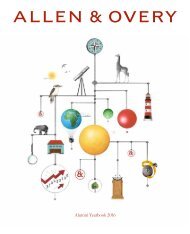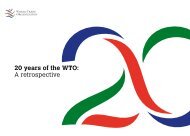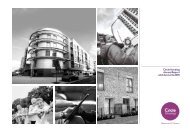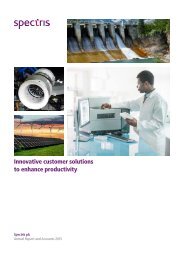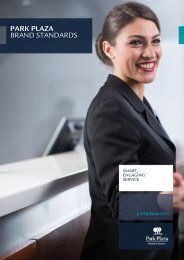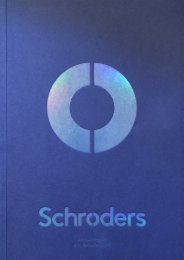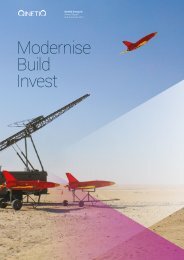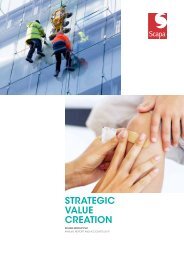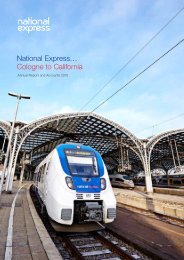20645_Scapa_AR_160504
You also want an ePaper? Increase the reach of your titles
YUMPU automatically turns print PDFs into web optimized ePapers that Google loves.
GROUP ACCOUNTING POLICIES CONTINUED<br />
BUSINESS COMBINATIONS AND GOODWILL<br />
Acquisitions of subsidiaries and businesses are accounted for using the acquisition method. The consideration for each acquisition is measured<br />
at the aggregate of the fair values (at the date of exchange) of assets given, liabilities incurred or assumed, and equity instruments issued by the<br />
Group in exchange for control of the acquiree. Acquisition related costs are recognised in profit or loss as incurred, and are normally treated<br />
as exceptional.<br />
Goodwill is measured as the excess of the sum of the consideration transferred, the amount of any non-controlling interests in the acquiree and<br />
the fair value of the acquirer’s previously held equity interests in the acquiree (if any) over the net of the acquisition-date amounts of the identifiable<br />
assets acquired and liabilities assumed.<br />
Where applicable, the consideration for the acquisition includes any asset or liability resulting from a contingent consideration arrangement,<br />
measured at its acquisition-date fair value. Subsequent changes in such fair values are adjusted against the cost of acquisition where they qualify<br />
as measurement period adjustments (see below). All other subsequent changes in the fair value of contingent consideration classified as an<br />
asset or liability are accounted for in accordance with relevant IFRSs. Changes in the fair value of contingent consideration classified as equity are<br />
not recognised.<br />
If the initial accounting for a business combination is incomplete by the end of the reporting period in which the combination occurs, the Group<br />
reports provisional amounts for the items for which the accounting is incomplete. Those provisional amounts are adjusted during the<br />
measurement period (see below), or additional assets or liabilities are recognised, to reflect new information obtained about facts and<br />
circumstances that existed as of the acquisition date that, if known, would have affected the amounts recognised as of that date.<br />
The measurement period is the period from the date of acquisition to the date the Group obtains complete information about facts and<br />
circumstances that existed as of the acquisition date, and is subject to a maximum of one year.<br />
Goodwill is tested annually for impairment, or when an indication of impairment is identified, and carried at cost less accumulated impairment<br />
losses. Gains and losses on the disposal of an entity include the carrying amount of goodwill relating to the entity sold.<br />
Goodwill is allocated to cash-generating units for the purpose of impairment testing. Each of those cash-generating units represents the Group’s<br />
investment in each site.<br />
PROPERTY, PLANT AND EQUIPMENT (INCLUDING LAND AND BUILDINGS)<br />
Land and buildings comprise mainly factories and offices. All property, plant and equipment is stated at historical cost less accumulated<br />
depreciation and impairment. Historical cost includes expenditure directly attributable to the acquisition of the items.<br />
Subsequent costs are included in the asset’s carrying amount or recognised as a separate asset, as appropriate, only when it is probable that<br />
future economic benefits associated with the item will flow to the Group and the cost of the item can be measured reliably. All other repairs and<br />
maintenance are charged to the Income Statement when incurred.<br />
Land is not depreciated. Depreciation on other assets is calculated using the straight-line method to reduce their cost to their residual values over<br />
their estimated useful lives, as follows:<br />
<br />
<br />
<br />
<br />
<br />
Freehold buildings: 40 years<br />
Leasehold buildings: life of the lease<br />
Plant and machinery: 5–20 years<br />
Furniture, fittings and equipment: 5–20 years<br />
IT systems: 3–8 years<br />
Assets held in the course of construction are not depreciated until they are brought into use.<br />
The assets’ residual values and useful lives are reviewed, and adjusted if appropriate, at each Balance Sheet date. An asset’s carrying amount<br />
is written down immediately to its recoverable amount if the asset’s carrying amount is greater than its estimated recoverable amount.<br />
Gains and losses on disposals are determined by comparing proceeds with carrying amount. These are included in the Income Statement within<br />
operating profit.<br />
76<br />
SCAPA GROUP PLC ANNUAL REPORT AND ACCOUNTS 2016<br />
71<br />
Annual Report and Accounts 2016 <strong>Scapa</strong> Group plc


